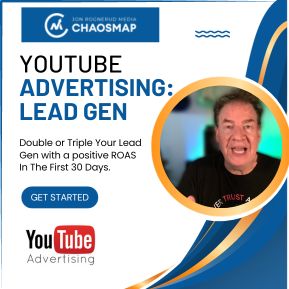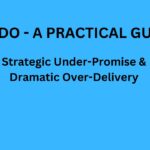What are keywords?
In the context of search engine optimization (SEO), keywords are words or phrases that are used to describe the content of a webpage.
Keywords help search engines understand the context of the page.
Keywords can be incorporated into a webpage’s structure (HTML) and overall content, and are used by search engines to index and rank web pages in search engine results pages (SERPs).
For example, if a web page is about hiking trails in the Rocky Mountains, some of the keywords for that page might include “skiing”, “hiking,” “trails,” “Rocky Mountains,” and “outdoor activities.”
These keywords would be used throughout the page’s content and metadata to give search engines a clear understanding of the topic and context of the page.
It’s important to choose relevant keywords that accurately describe the content of your webpage. Strategic selection and usage of keywords will help search engines understand the context of the page and improve the chances that it will rank highly in search results for those keywords.
In addition, using relevant keywords can help attract qualified traffic to your website, as people searching for those terms are more likely to be interested in the content of your site.
Why are keywords important for SEO?
Keywords are important for SEO because they help search engines understand the content and context of web pages.
When a user searches for a particular keyword or phrase, search engines will use the keywords on web pages to determine how relevant and useful those pages are to the user’s search query.
Incorporating relevant keywords into a webpage’s content, titles, and meta tags can help increase the chances that the page will rank highly in search engine results for those specific keywords.
This is especially important because people are more likely to click on the top search results when they perform a search.
TIP: Most searchers do not scroll far down the page for search results (Remember “page 2 nowhere land” results in the old days?). Make sure your brand is shown top of the page, in the top 1-3 positions is essential.
Using relevant keywords can also help businesses and organizations attract qualified traffic to their websites.
For example, if a company sells outdoor gear, it would be beneficial for them to use keywords related to outdoor activities and equipment in their web content, as this will make it more likely that their website will be found by people searching for those terms.
Overall, using keywords effectively in your website’s content and meta tags can help improve your search engine rankings and drive targeted traffic to your site.
What are head terms?
Head terms, also known as head keywords, are broad and general keywords that are typically used to describe high-level topics or concepts.
These keywords are typically made up of one or two words. They are usually very competitive due to their wide popularity and usage. And, they can be brand mentions as well.
Head terms are often used in the early stages of the customer journey.
For example, when searchers are just starting to research a topic and are looking for general information. If you are a person who is interested in buying a new car might start by searching for head terms like “cars,” “new cars,” or “car buying.”
Head terms are normally very broad and competitive, so it can be difficult for a website to rank highly for these keywords.
Especially if the site is new or has limited authority and trust built with search engines.
However, including head terms in a website’s content and metadata can still be helpful, as they can help search engines understand the general context of the site and may still drive some traffic to the site.
It’s generally more effective to focus on long-tail keywords, which are more specific and less competitive, in order to drive targeted traffic to a website. Long-tail keywords are typically made up of three or more words and are more specific and less competitive than head terms.
These phrases typically have less traffic (search volume), but are easier to convert to new business.
What are long-tail keywords?
Long-tail keywords are specific, highly targeted keywords that are made up of three or more words and are less competitive than head terms or broad keywords. They are often used to describe more specific or niche products or services, and are typically used later in the customer journey when people are looking for more detailed information or are ready to make a purchase.
The “Long Tail” concept first gained notoriety when it was introduced to the masses by Chris Anderson, author of “The Long Tail: Why the future of business is selling less of more.”
For example, instead of using the head term “cars,” someone looking to buy a new car might search for long-tail keywords like “best small cars for city driving” or “affordable electric cars with long range.” These long-tail keywords are more specific and targeted, and are less competitive than broad, head terms like “cars.”
Using long-tail keywords in your website’s content and metadata can help improve your search engine rankings for those specific phrases and drive targeted traffic to your site.
This is because long-tail keywords are more specific and less competitive, so it may be easier for a website to rank highly for them.
In addition, the traffic that is driven to the site by long-tail keywords is often more qualified and more likely to convert, as it is coming from people who are specifically searching for the products or services that the site offers.
What are SEO best practices to use now?
Here are some best practices for using keywords effectively in your SEO strategy (B2B or B2C):
- Research relevant keywords: Use keyword research tools (for example, ahrefs, semrush, moz) to identify the keywords and phrases that are most relevant to your business and the content of your website. Look for keywords that have a high search volume and are relevant to your products or services.
- Use keywords in the right places: Incorporate your keywords into the titles, headlines, and body content of your webpages. Use them naturally and avoid keyword stuffing, which is the practice of overusing keywords in an attempt to manipulate search rankings.
- Use variations of your keywords: In addition to using your main keywords, consider using variations of those keywords, such as synonyms or related phrases, to help search engines understand the context of your page.
- Use long-tail keywords: In addition to using head terms or broad keywords, consider using long-tail keywords, which are more specific and less competitive, to drive targeted traffic to your site.
- Use keywords in meta tags: Include your main keywords in the meta tags of your webpages, including the title tag and meta description. These tags help search engines understand the context of your page and can influence how it is displayed in search results.
- Use keyword-rich URLs: Use keywords in the URLs of your webpages to give search engines additional context about the content of the page.
- Update your content regularly: Keep your website’s content up to date and fresh by adding new pages and updating existing pages with fresh, keyword-rich content. This can help improve your search engine rankings and keep your site relevant to users.
TIP: Make sure to organize your content thematically, and answer questions that searchers have about your niche, product and markets.
Want to know more? Stay on top of the latest changes in search by subscribing to our ‘Chaos Insiders’ only list.
Jon Rognerud and Chaosmap work with Fortune 500 companies, associations and entrepreneurs to create digital traffic strategies that scale up members, customers, leads and sales with profitable returns. Mr. Rognerud wrote a best-selling book (Buy On Amazon), “The Ultimate Guide To Optimizing Your Website” (Entrepreneur). Connect directly here.







